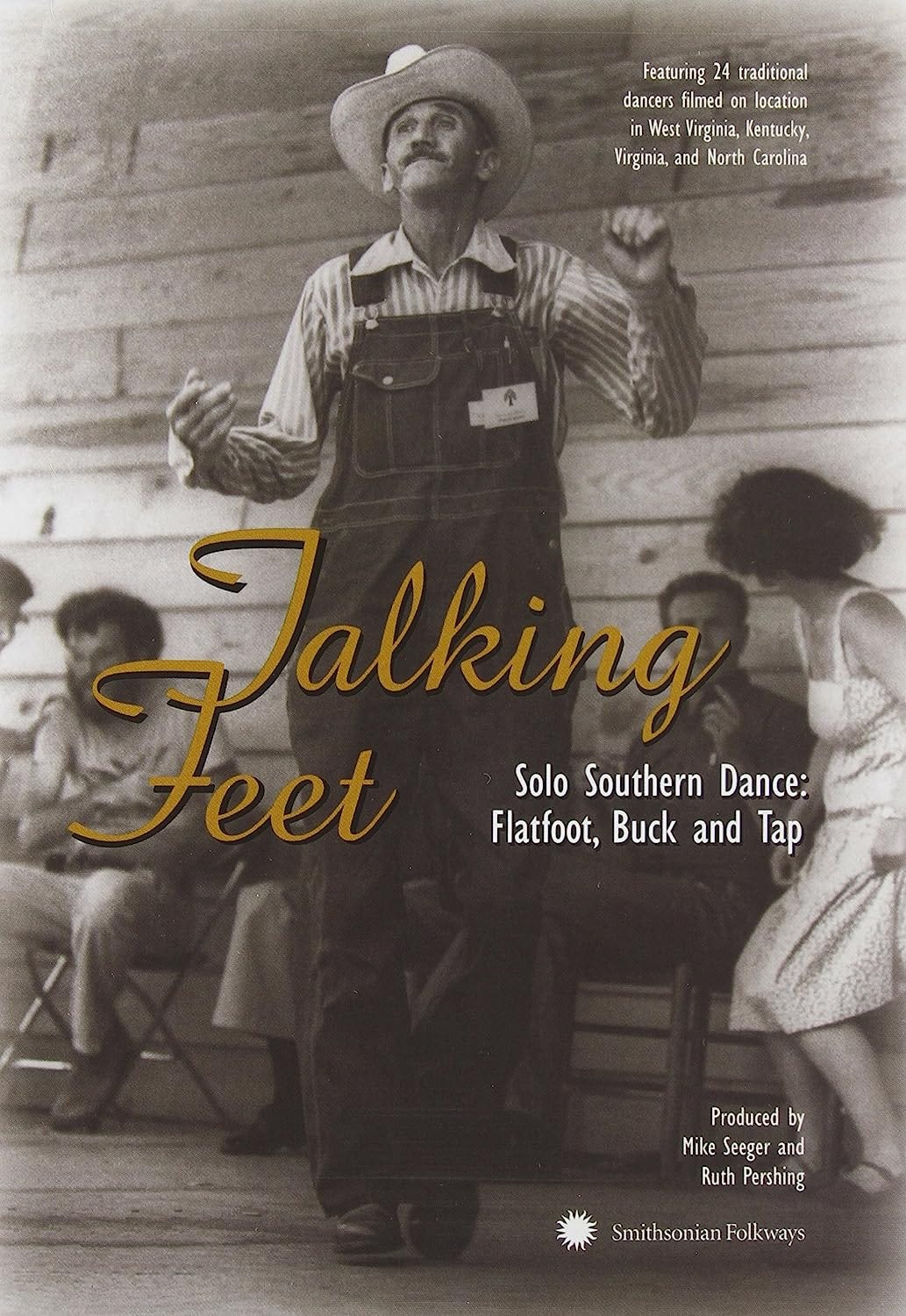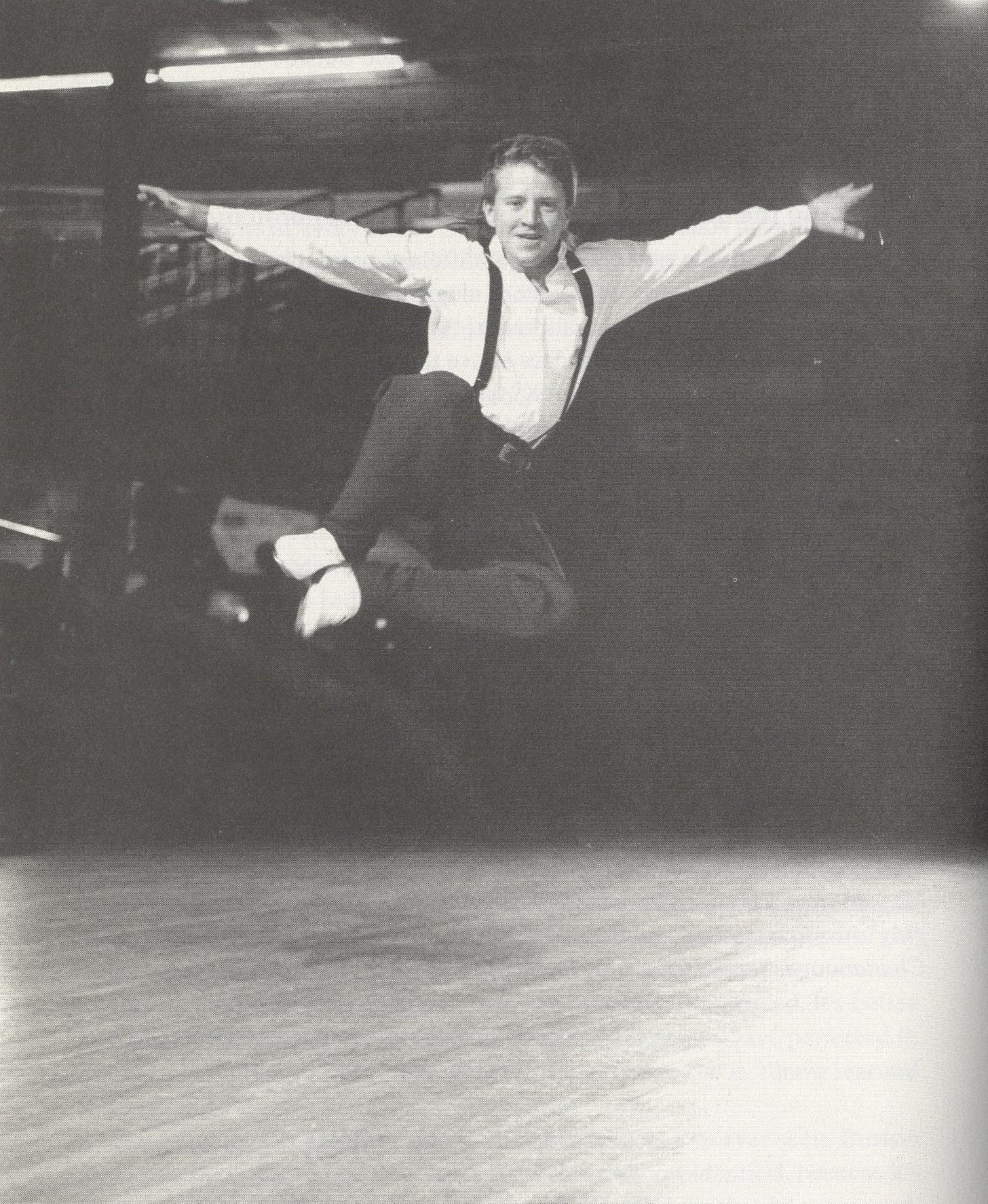Creating Community through Self-Expression
A look back at an inspiring documentary that focuses on dancers in Southern communities.
In March of 1986, folklorist and musician Mike Seeger found himself in Berkeley, California promoting a documentary film called Talking Feet that he had just finished co-producing. On a spring Sunday morning, he sat down with Chris Strachwitz, the proprietor of Arhoolie Records, for an interview on Chris’s KPFA radio show. The excitement that Mike possessed for the film’s subject of mountain solo dance radiates throughout the interview, with the origin of his interest detailed here:
Chris Strachwitz: How did you get into this (style of) dance?
Mike Seeger: It was by going to, hanging out with country people who I’d see dance. I mean, Hazel (Dickens) and I would be jamming at one of her in-laws or not in-laws, one of her family’s house, just a house party, you know? Playing bluegrass, and somebody who’d be listening would get up and start dancing. That’s the way this dance is done, you see. They’d get up and do a couple of steps and I’d be intrigued to watch. It’s beautiful.
Here at Dust-to-Digital, we are longtime fans of the documentary Talking Feet. The film is the culmination of several years of intensive research by Mike Seeger and Ruth Pershing into the traditional dance of the Southern Appalachian region. Here is how Mike described the production to Chris during the radio appearance:
Mike Seeger: Well, this video tape is a documentary of about 20 different dancers… and it’s basically arranged like an LP. You visit with one dancer, they’ll dance, they’ll talk for a couple of minutes, maybe a story or a description of what they’re doing. Then maybe dance again, and then you fade to black, and you go on and visit another dancer in another community, or in just a place. And it’s an attempt to show to people who are out of the region how the old time dance, which is something that’s fed into modern day clogging, how it exists, just like old time music. But you don’t ever get a chance to see these dancers much out of the region.
When April and I started Dust-to-Digital, many of our early releases focused on music from the American South, a region where both of us have lived our entire lives. As our label evolved, we began to receive proposals for releases featuring recordings from all over the world. Now, years later, the Dust-to-Digital social media, especially the Instagram page, have become a hub for people to share musical performances from various geographic regions. We strive to make our social media serve as platforms where the spirit of folklorists like Mike Seeger's work can live on — a place where people can create community around a love for self-expression and music.
Music is a universal language that unifies consciousness, and it is an honor for human beings to be able to share this experience. — Thämi Rodríguez, an Instagram user’s recent comment on a Dust-to-Digital post of videos from around the world.
Talking Feet is an invaluable portal to both people and a time that have passed. We are all very fortunate to have this document to enrich our cultural landscape by allowing access to these incredible artists and their communities.
The film is available to watch for free via Smithsonian Folkways and Folkstreams.
I think it's the same goal. I mean, if you're going downtown, a lot of people take this street, take that street… but your destination is the same. (Dancing) is an expression of personality. When you dance, when you do everything you do, it's an expression of your being. — Fris Holloway, from Talking Feet
When I first started dancing, I just did this old twisting dance and things like that… Then after awhile, I picked up that old-time buckdance. See, I been dancing since I was a little bitty girl. Now, we be blowing a bottle, you know, my cousin, and I’ll be picking guitar, someone’ll be playing the spoons, someone’ll be playing the washboard. So we just knock out something once in a while. I can’t be still myself. — Algia Mae Hinton, from Talking Feet
I feel like these dances are freedom dances… freedom meaning people tend to do this when they’re through (with) work. They’re free from their day's work, it's a time to relax and celebrate. But also freedom by meaning you're never wrong, you know? You can be taught or you can watch and you can do this… and everybody’s different but yet everybody’s right.” — Burton Edwards, from Talking Feet
Thank you for subscribing to “The World of Dust-to-Digital” on Substack. If you do not receive our newsletter, we would like to let you know about a 20% off sale we are running on all of our apparel and releases through next Friday. You can find more info here.
Finally, as a special thanks for our paid subscribers, we would like to offer a streaming link to a film we released on DVD in 2011 entitled Let Your Feet Do the Talkin'. Directed by filmmaker Stewart Copeland, the documentary short tells the story of 70-year-old buckdancing legend Thomas Maupin.
Copeland's film covers some of the same dance styles as Talking Feet and explores the story of an artist and how his relationships, especially the one with his banjo-playing grandson, shape his craft. If Talking Feet is a carousel of various dancers’ vignettes, then Let Your Feet Do the Talkin' is the more introspective view of a single dancer.
We appreciate your financial support and hope you enjoy the film which is linked below.







